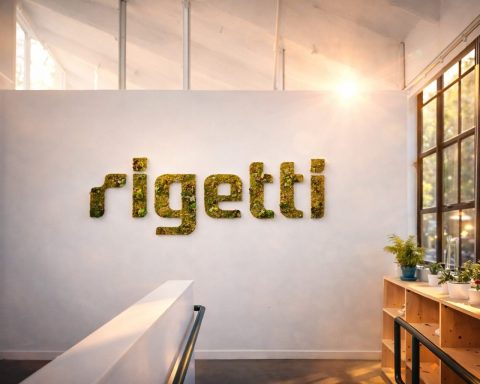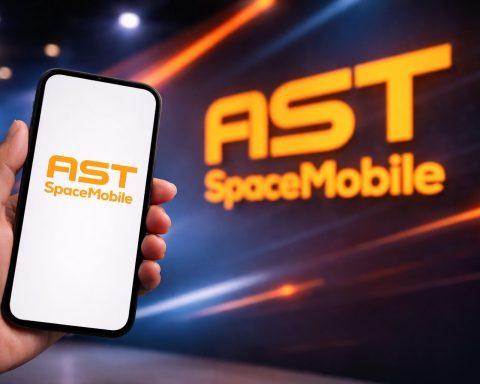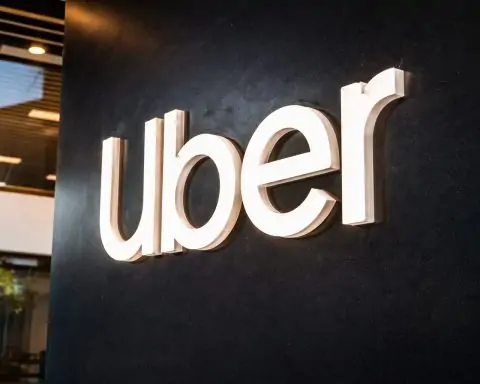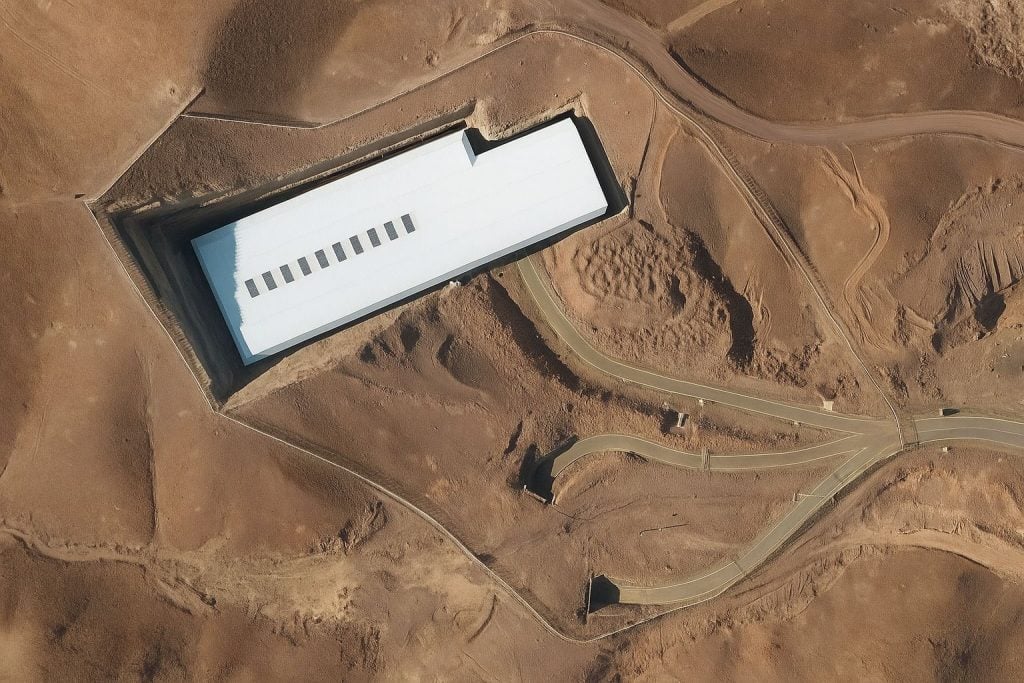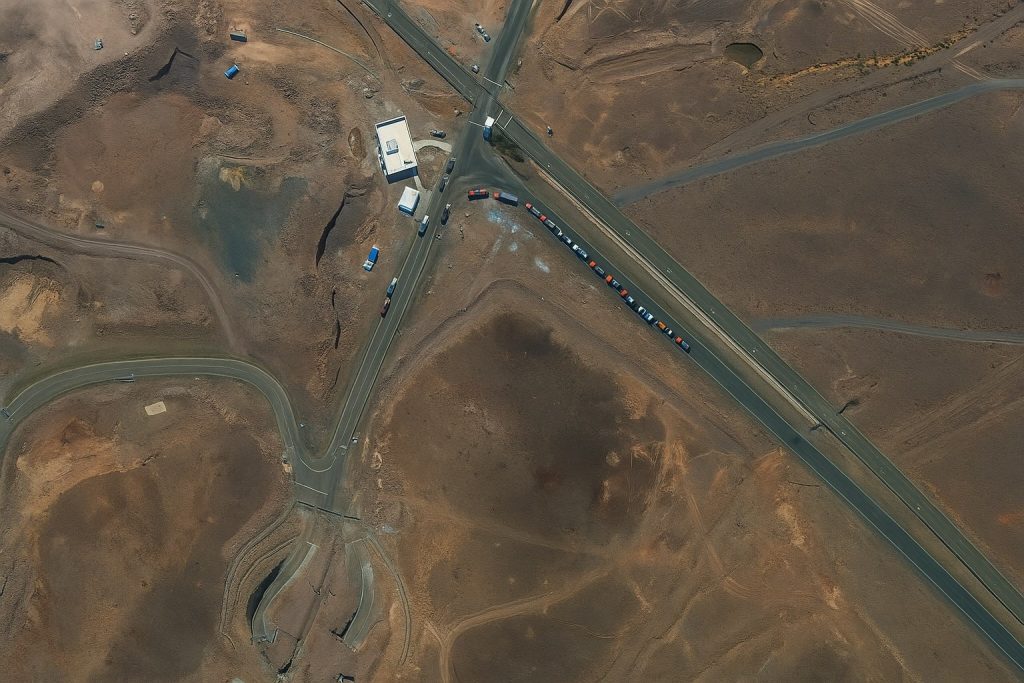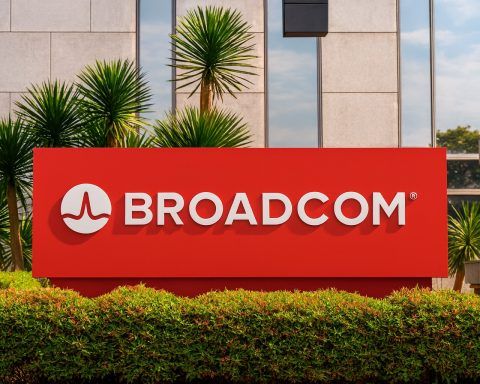- Romania’s first Internet connection was established in 1993 via ici.ro.
- In the late 1990s and early 2000s, urban residents built “rețele de cartier” by stringing Ethernet cables between buildings, helping the country leapfrog DSL.
- By 2020 Romania ranked third in the world for fastest fixed internet speeds, behind Singapore and Hong Kong.
- As of 2024, 88.6% of Romanian households had internet at home, with 92.5% of urban and 83.2% of rural households online.
- Fiber dominates the fixed network, with about 93% of localities passed by FTTH/B and about 93% of localities able to access gigabit speeds.
- Digi (RCS&RDS) had about 4.6 million fixed subscriptions (roughly 70% market share) as of end-2023, Orange Romania about 1.2–1.3 million (≈19%), and Vodafone Romania about 0.5 million (≈10%).
- Starlink became available in Romania in April 2022, delivering about 100–200 Mbps with 30–50 ms latency, with prices cut to around 230 RON per month and upfront hardware costing about 2,320 RON.
- RO-NET, started in 2014, built 3,265 km of fiber backbone for about €69 million (€57 million from the EU/ERDF) and connected roughly 600 localities by 2020, bringing online about 400,000 rural residents, 8,500 businesses, and 2,800 public institutions.
- 5G began commercial rollout around 2019–2020, but by 2023 fewer than 55% of Romanian households were within a 5G coverage area, well below the EU average of about 89%.
- The National Recovery and Resilience Plan allocates about €94 million to broadband in white and grey areas, with ~4,000 km of fiber to about 945 localities by 2026, benefiting more than 78,000 households.
Historical Context of Internet Development in Romania
Romania’s journey to widespread internet access began in the early 1990s, after the fall of communism. The country’s first connection to the Internet was established in 1993 [1], relatively late compared to Western Europe, but this late start allowed Romania to leapfrog older technologies. In the late 1990s and early 2000s, tech-savvy Romanians in urban apartment blocks created their own neighborhood local area networks (known as “rețele de cartier”, or block networks) by stringing Ethernet cables between buildings [2]. These informal grassroots networks – often set up to share files, games, and pirated media – flourished due to lax regulation, resulting in visible nests of overhead wires in cities [3] [4].
When commercial internet service took off toward the late 1990s, Romania’s weak telephone infrastructure meant DSL (broadband over copper phone lines) never became widespread. Instead, those apartment LANs evolved into dozens of small ISPs that jumped directly to fiber-optic technology, bypassing the slower DSL era [5]. This head start in deploying fiber in urban areas led to remarkably fast internet speeds. By the early 2010s, Romania had a reputation for blazing broadband: as of 2020 it ranked third in the world for fastest fixed internet, behind only Singapore and Hong Kong [6]. The capital Bucharest became a “digital fantasy” for travelers, brimming with open Wi-Fi signals and cheap, ultra-fast connectivity [7].
However, this early success was mostly an urban phenomenon. While cities enjoyed world-class broadband, Romania’s rural regions lagged behind. A stark urban–rural digital divide began to form, a challenge the country has been racing to address ever since. By 2020, observers noted that Romania’s rural areas still struggled with basic broadband access even as its cities boasted gigabit speeds [8]. This contrast set the stage for concerted efforts – the real “Wi-Fight” – to extend high-speed internet to every corner of the country.
Current State of Internet Access: Urban vs. Rural
Internet access in Romania today is nearly universal in urban areas, but rural connectivity still trails in both availability and uptake. Overall, 88.6% of Romanian households had internet access at home in 2024, up from around 85% the year before [9]. In cities and larger towns, connectivity is approaching saturation – about 92.5% of urban households are online – thanks to extensive fiber networks and cable systems [10]. In contrast, only about 83.2% of rural households have internet access at home [11]. This 9 percentage point urban–rural gap underscores the remaining challenge in connecting remote villages. Regions like Bucharest-Ilfov boast the highest household internet access (95%+), whereas poorer or more remote regions (North-East, South-East) still see around 85% of homes connected [12].
Notably, most Romanians now enjoy high-speed broadband where internet is available. Thanks to the dominance of fiber in the infrastructure (discussed below), even many small towns have access to 100 Mbps or faster connections. According to Romania’s telecom regulator ANCOM, 90% of fixed internet connections offer speeds over 100 Mbps as of 2022 [13]. The number of gigabit (1000 Mbps) subscriptions has been rapidly rising as fiber optic coverage expands [14]. Urban users commonly subscribe to 300 Mbps, 500 Mbps, or even 1 Gbps plans, often at affordable prices, making Romania one of the best-connected countries speed-wise.
Rural areas, however, remain the focus of connectivity initiatives. By late 2024, an estimated 30% of rural localities still did not have access to high-speed internet (defined as next-generation access, ~30 Mbps or above) [15]. Many villages continue to rely on older technologies – DSL over copper phone lines, or patchy 4G mobile signals – which provide basic internet but not always “broadband” speeds. This digital divide has both infrastructure and socio-economic facets: not only is it technically harder and more expensive to wire dispersed villages, but digital literacy and demand can be lower in those communities [16]. Bridging this gap is a national priority, and recent data shows improvement. For example, between 2023 and 2024 the share of rural households with internet access jumped by ~4 percentage points as new networks went live [17].
Crucially, internet usage is also climbing and converging with European norms. In 2024, about 94.7% of Romanians aged 16–74 had ever used the internet, and 91.6% used it in the last 12 months – just shy of the EU average (92.4%) [18] [19]. This suggests that once infrastructure reaches a community, people do get online. The “Wi-Fight” now largely centers on extending infrastructure – fiber lines, wireless towers, or satellite links – to the remaining underserved areas, and ensuring affordability and skills so that all citizens can benefit.
Types of Internet Technologies Available
Romania’s internet landscape features a mix of fixed and wireless broadband technologies, with fiber optics leading the pack in terms of performance and coverage. Below is a breakdown of the major access technologies and their prevalence:
- Fiber-Optic Broadband (FTTH/B): Fiber to the home/building is the backbone of Romania’s fixed internet. Thanks to the early neighborhood networks and aggressive rollouts by providers, fiber has become the standard in cities and many towns. As of 2022, three out of four fixed internet connections in Romania were fiber-based [20], a share that continues to grow each year. Fiber networks (including hybrid fiber-coax) pass an estimated 93% of localities nationwide [21], giving the vast majority of the population the option of gigabit-capable service. The main fiber providers (Digi, Orange) offer speeds from 300 Mbps up to 1 Gbps or even 10 Gbps in some areas. This widespread fiber availability is a key reason Romania consistently ranks among the fastest internet countries in the world.
- Cable (DOCSIS): Cable broadband, using coaxial cable TV networks upgraded to DOCSIS standards, is also available, though its role has diminished as fiber expanded. The legacy cable networks (primarily built by UPC, now part of Vodafone) cover about 22% of Romanian localities [22], mostly in urban areas and larger communes. Cable connections can provide hundreds of Mbps (DOCSIS 3.0/3.1), and in many apartment blocks the distinction between “fiber” and “cable” is blurred as operators use fiber up to the building and coax inside. In practice, cable serves a minority (~10–15%) of fixed broadband customers, mainly where fiber hasn’t yet completely overbuilt the old cable TV infrastructure. Cable operator Vodafone provides up to 500 Mbps plans on these networks.
- DSL (Copper ADSL/VDSL): Broadband over telephone lines (ADSL/VDSL) was historically provided by Romtelecom (the former state telco, now part of Orange). However, DSL has largely been surpassed. While DSL infrastructure theoretically reaches much of the country (over 98% of rural households had a telephone line available by 2022) [23], its actual use is shrinking fast. DSL now accounts for well under 10% of broadband subscriptions, mainly in remote villages where no fiber or cable is present. Connection speeds on DSL are typically 20 Mbps or below in rural loops. Orange has been replacing copper with fiber in many areas since acquiring the fixed network, meaning DSL will likely vanish in the coming years.
- Fixed Wireless Access (FWA): A number of smaller ISPs and community networks use wireless radio links to deliver internet to rural homes. These can include point-to-point microwave links, WiMAX, or Wi-Fi-based systems broadcasting from local towers or water tanks. Fixed wireless networks cover roughly 29% of localities [24], often the same villages underserved by wired solutions. While quick to deploy, FWA often comes with higher latency and limited bandwidth (e.g. a few tens of Mbps shared), making it a stopgap solution. The government’s broadband mapping shows hundreds of hamlets relying on wireless ISPs for basic connectivity. In the long term, many of these areas are candidates for fiber or 5G fixed wireless upgrades.
- Mobile Broadband (3G/4G/5G): Mobile networks are a critical component of internet access in Romania, especially for individuals on the move and in areas lacking fixed lines. 4G LTE coverage is virtually universal, reaching over 99% of the population [25]. Mobile data usage has grown rapidly, with affordable plans from all major operators. However, 4G speeds in Romania, while decent (median ~30–40 Mbps), do not match the fiber speeds available on fixed networks [26] [27]. The new frontier is 5G: Romania launched 5G commercially in 2019–2020, but rollout has been slower than in Western Europe. By 2023, only under 55% of Romanian households were within a 5G coverage area, one of the lowest 5G coverage rates in the EU [28]. Major cities like Bucharest, Cluj, and Timișoara have 5G service from Orange, Vodafone, and Digi, offering mobile download speeds well over 200 Mbps. Expanding 5G to reach rural and suburban areas is a key goal looking ahead (with a national target to cover all urban areas and transport corridors by 2025 [29]).
- Satellite Internet: Until recently, satellite internet in Romania was a niche used only in the most remote locations (mountain hamlets, Danube Delta villages) due to high costs and latency of geostationary satellite links. This changed with the arrival of Starlink, SpaceX’s low-earth orbit satellite broadband service. Starlink became available in Romania in April 2022 [30], instantly covering virtually the entire country from the sky. It offers high speeds (100–200 Mbps) and much lower latency than traditional satellite, making it a viable option for rural homes beyond the reach of fiber or 4G. However, the cost remains a barrier for widespread use: initially about 529 RON per month, Starlink’s monthly fee was later cut to RON 230 (€47) [31], with upfront hardware cost around RON 2,320 (€470) for the dish and router [32]. This is expensive relative to Romanian incomes and the ultra-cheap fiber plans available in towns. As a result, satellite is currently a last-resort solution for a few hundred rural users (e.g. remote farms, mountain lodges) rather than a mainstream competitor. Its role may grow if prices fall or government subsidies emerge for connecting “white zones” via satellite.
In summary, Romania’s internet access mix is marked by the primacy of fiber in settled areas, complemented by cable in some cities, legacy DSL fading away, ubiquitous mobile broadband, and emerging satellite options. The dominance of fiber-optic technology sets Romania apart from many peers – a strength in delivering high speeds, but also a challenge in that extending fiber to every far-flung village is capital-intensive. Therefore, a combination of fiber backbone, mobile 5G/fixed wireless, and selective satellite links is likely the formula to achieve full coverage.
Key Internet Service Providers and Market Shares
Romania’s telecom market has consolidated in recent years into three major converged operators (each offering both fixed and mobile service), along with a handful of smaller players and niche providers. Below is an overview of the key Internet Service Providers (ISPs) and their roles:
Major Broadband Providers: The “big three” fixed broadband companies are Digi (RCS&RDS), Orange, and Vodafone, which together control about 99% of the fixed internet market [33]. Each has nationwide infrastructure and also offers mobile services:
- RCS & RDS (Digi) – Market leader. Digi is a Romanian-founded company that grew out of the early neighborhood networks and cable TV systems. It has deployed extensive fiber across cities and towns and now serves around 4.6 million fixed internet subscriptions (70% market share as of end-2023) [34]. Digi’s hallmark is affordable high-speed packages – for example, 1 Gbps fiber for ~40 RON (€8) per month. It also operates a mobile network (Digi Mobil) and has expanded to offering pay TV and telephony. Digi’s competitive pricing and aggressive expansion into rural areas (including acquisitions of smaller cable operators like AKTA) have cemented its dominance [35].
- Orange Romania – Former incumbent’s footprint. Orange is the largest mobile operator and, since 2021, also a major fixed broadband player after acquiring Telekom Romania’s landline business. Under the brand “Orange Romania Communications,” it took over the old Romtelecom infrastructure (DSL, fiber, and rural exchanges) and the Nextgen fiber ISP [36]. Orange now controls roughly 19% of fixed broadband lines (about 1.2–1.3 million subscriptions) [37], making it the second-largest provider. Its fixed network spans both modern fiber (FTTP in many areas) and remaining VDSL/DSL in others, though Orange has been upgrading many villages with fiber to stay competitive. On the mobile side, Orange leads with about 36% market share and is known for the widest 4G coverage and early 5G rollout. The convergence of Orange’s mobile strength with the former Telekom’s fixed lines positions it as a strong challenger to Digi, especially for higher-end customers.
- Vodafone Romania – Cable and mobile operator. Vodafone entered Romania’s fixed broadband market by acquiring UPC Romania (Liberty Global’s cable company) in 2019 [38]. Vodafone now has about 9–10% of fixed internet subscriptions (~0.5 million) [39], mostly via the cable (DOCSIS) networks in urban areas that it inherited. It is upgrading some of these to gigabit-capable DOCSIS 3.1 and also deploying fiber in new build districts. In mobile, Vodafone is the second-largest operator (around 24% share), offering 2G/3G/4G nationwide and 5G in major cities. Vodafone positions itself with convergent offers (mobile + TV + broadband) and targets urban households that might prefer cable TV bundles. Its challenge remains the limited reach of its fixed network beyond cities, though it can also resell fiber in areas where it lacks infrastructure.
- Telekom Romania (Mobile) – A diminished legacy. Telekom Romania was the brand of the former state telecom operator (Romtelecom) and the Greek-owned mobile operator (Cosmote) after their merger. Following the sale of the fixed division to Orange, Telekom now only operates as a mobile provider (renamed Telekom Mobile). It has a small share of mobile subscriptions (~16% of mobile users, focused on budget segments) and no fixed broadband offerings of its own anymore. Consequently, Telekom is no longer a major player in internet provision beyond its mobile data services, and its presence is expected to continue declining or be acquired.
- Other ISPs: Despite the dominance of the big three, Romania still has numerous regional and local ISPs. ANCOM counts over 120 alternative providers offering ≥100 Mbps connections [40] – often these are the successors of the old “rețele de cartier” or local entrepreneurs in areas the big firms hadn’t fully covered. These smaller ISPs collectively serve only ~1% of connections as of 2023 [41], down from 8% in 2018, due to many being acquired or outcompeted. However, they remain important in specific locales (for example, a family-run fiber ISP in a rural county seat, or community networks in suburban villages). Some examples include Nextgen (now part of Orange), Digital Cable Systems (AKTA, now absorbed by Digi), and various city-level fiber providers. There are also specialized providers like Symphogy/Telekom (offering wireless broadband in remote areas) and RCS’ Vivacom in certain communes, though these are niche.
- Starlink and Satellite ISPs: While not a traditional ISP, Starlink is now an option for Romanians, as mentioned. It has no significant market share yet (estimated only a few thousand users at most), but it’s the first time that truly any location – no matter how isolated – can get a fast internet connection if they are willing to pay the price. Older satellite services (using geostationary satellites such as Tooway or Viasat) exist but are exceedingly rare due to very slow speeds and high latency; most users needing satellite have migrated to Starlink or simply rely on 4G instead.
The table below summarizes the main fixed internet providers and their approximate market shares:
| Provider | Fixed Broadband Subscribers | Market Share (fixed) | Primary Technologies |
|---|---|---|---|
| RCS & RDS (Digi) | ~4.6 million (2023) [42] | ~70% [43] | FTTH/FTTB fiber, Cable (DOCSIS), Mobile 4G/5G |
| Orange Group (Orange Romania & Orange Romania Comm.) | ~1.3 million (2023) [44] | ~19% [45] | FTTH, VDSL/DSL, Mobile 4G/5G |
| Vodafone Romania | ~0.5 million (2023) [46] | ~10% [47] | Cable (DOCSIS), FTTH, Mobile 4G/5G |
| Other ISPs (combined) | ~0.2 million | ~1% [48] | Fiber/LAN, FWA wireless, DSL (varies) |
| Satellite (Starlink) | n/a (few thousand est.) | <1% | LEO Satellite (Starlink) |
Market share data as of end of 2023, by number of fixed broadband connections.
Digi’s commanding lead is evident – it has more subscribers than all other competitors combined – owing to its wide fiber coverage, low prices, and acquisitions. Orange and Vodafone, as integrated telecoms, are leveraging their mobile customer bases to sell converged packages and slowly chip away at Digi’s lead in some segments. Meanwhile, the Romanian market continues to be one of healthy competition and low prices, benefiting consumers (as seen in the next section on pricing). Unlike some countries, there is no state-owned broadband monopoly; competition between these private operators has been a major factor in Romania’s internet success story.
Broadband Speed and Coverage Statistics
Romania’s broadband speeds are among the fastest in Europe, thanks largely to its extensive fiber networks. At the same time, coverage (the reach of networks across the population) has improved greatly and in some aspects now exceeds EU averages, although rural gaps persist in certain areas. Below are key statistics on speed and coverage:
- Fixed Broadband Speeds: The country’s fixed-line broadband is consistently top-ranked globally. In 2023, the average download speed on fixed broadband in Romania was about 587 Mbps, with an average upload speed of 548 Mbps [49]. These figures, measured by ANCOM’s Netograf speed test platform, were roughly 10% higher (download) and 20% higher (upload) than the previous year [50]. Such high averages reflect the prevalence of fiber gigabit subscriptions in the cities. By comparison, the global median download speed is around 80–100 Mbps, so Romania’s fixed internet is several times faster. Even when using Wi-Fi (which can bottleneck gigabit connections), Romanian users saw a healthy 156 Mbps average download over Wi-Fi in 2023 [51]. These extraordinary speeds place Romania routinely in the top 5–10 countries worldwide for fixed broadband; for instance, it was 3rd in the world in one 2020 ranking and remains among the fastest in Europe [52] [53]. The fast speeds have enabled a thriving tech industry and high adoption of bandwidth-heavy applications (HD streaming, cloud services, etc.).
- Mobile Broadband Speeds: Mobile internet, while slower than fixed, has been improving steadily. In 2023, average mobile download speed was ~39 Mbps and upload ~12 Mbps on 4G/5G networks [54] [55]. This was a slight increase from ~38 Mbps the year before on download (though upload speeds dipped from 15 to 12 Mbps, possibly due to network load) [56]. Romania’s mobile speeds rank in the middle of the EU pack – not outstanding, but sufficient for most smartphone uses. With ongoing 5G rollout, peaks in the hundreds of Mbps are becoming common in covered cities. As 5G coverage widens (discussed below), mobile speeds should rise further, offering a viable alternative for home broadband in areas without fiber.
- Fiber and Gigabit Coverage:Romania is a leader in fiber coverage in the EU. Roughly 93% of settlements (cities/communes) have access to fiber-to-the-home/building networks capable of 1 Gbps or more [57] [58]. This places Romania alongside countries like Latvia and Spain with the highest FTTH coverage (each above 85% of homes passed) [59]. According to an ANCOM survey in 2024, after aggregating all networks, gigabit-level speeds (≥1000 Mbps) were available in over 93% of localities in Romania [60]. In practical terms, most towns and large villages now have at least one high-speed network present (usually Digi fiber or Orange fiber). The remaining uncovered localities are typically very small, remote villages in difficult terrain – e.g. hamlets in the Carpathian Mountains or the Danube Delta [61]. Bridging those last few percent is challenging and is where state aid or alternative technologies (like satellite) are focused. Overall, Romania has already met and exceeded the EU’s “Gigabit Society” 2025 target in terms of coverage, on paper.
- DSL and Older Network Coverage: While virtually all Romanian households could get some form of fixed internet (legacy telephone lines reach ~99% of homes, and 4G covers 100%), the availability of high-speed broadband is the more relevant metric now. DSL infrastructure still covers many rural areas (over one-third of localities have ADSL available [62]), but because fiber often overlaps these areas, the mere presence of DSL is less meaningful. Nearly 90% of all fixed connections are now on networks that support 100+ Mbps [63], indicating that truly slow options are few and far between.
- Urban vs Rural Coverage: The national fixed broadband coverage (at least 30 Mbps) is around 98–99% of households, which is comparable to the EU average (~97%) [64] [65]. However, rural broadband coverage (particularly VHCN – Very High Capacity Network coverage) is lower. In the EU, only 34% of rural households had FTTP coverage in 2021 [66]; Romania likely exceeds that now, given its push into villages, but perhaps around 60–70% of rural homes have direct fiber coverage. Many of the rest rely on 4G or older tech. The rural coverage gap is illustrated by the figure that around 1,635 settlements lack full access to broadband (or have only partial coverage) according to ANCOM [67]. These are exactly the communities being targeted by new investment programs. It’s worth noting that the definition of “coverage” can mean a network passing through a locality even if not every last household is connected – so a village might be marked as covered once the fiber goes to the central area, even if outlying hamlets still need extension.
- Mobile Coverage (4G/5G): On the wireless side, 4G LTE covers nearly 100% of Romania’s population (practically every inhabited locality has 4G signal from at least one operator) [68]. 3G networks are being phased out (with 2G kept for voice), as 4G and 5G take over data traffic. 5G coverage, as mentioned, is a weak point relative to Western Europe. By mid-2024, only roughly 55% of households had 5G available from any operator, far below the EU average of ~89% [69]. Romania, Belgium, and Latvia were the laggards on this indicator in the EU [70]. The slow start was partly due to delays in auctioning 5G spectrum (held in late 2022) and restrictions on certain vendors, which slowed rollout. The government’s goal is to accelerate 5G deployment so that by 2030, all populated areas have ultra-fast wireless internet. In the interim, 4G remains the fallback for mobile broadband in most rural areas.
To put Romania’s connectivity in perspective, the country now often outperforms wealthier EU nations on raw infrastructure metrics – for example, it has a higher share of fiber-connected households than France or Germany [71], and offers higher average speeds than the UK or Italy. The flip side is that broadband adoption and digital usage started from a lower base – Romania historically ranked last in the EU’s Digital Economy and Society Index (DESI) due to low internet usage and digital skills, even if connectivity was available. This is gradually changing as coverage becomes quasi-universal and younger generations are born into the digital age. The following table summarizes some key coverage metrics:
| Network/Technology | Coverage in Romania (2024) | Notes |
|---|---|---|
| Fiber-to-the-Home (FTTH/B) | >93% of localities [72] | (Nationwide household coverage ~85–90%; leading EU tier) |
| 1000 Mbps+ Gigabit Networks | ~93% of localities [73] | Gigabit-capable via fiber or cable (excluding remote areas) |
| DSL (Copper) | ~33% of localities [74] | (Legacy coverage; many overlaps with fiber areas) |
| Cable (DOCSIS) | ~22% of localities [75] | Major cities and towns, UPC/Vodafone footprint |
| Fixed Wireless (Radio) | ~29% of localities [76] | Mainly rural wireless ISPs coverage |
| 4G LTE Mobile | ~99% population [77] | Essentially universal outdoor coverage |
| 5G Mobile | <55% households (2023) [78] | Limited to urban centers; rapid expansion ongoing |
These statistics highlight Romania’s strong position on fixed broadband and the ongoing efforts on mobile. In practice, a Romanian living in any city or large commune can likely choose between multiple gigabit providers, whereas someone in a small village might only have one high-speed option (or currently just 4G). The “race to connect every corner” is about turning that latter situation into the former – ensuring redundancy and high performance everywhere.
Pricing and Affordability
One of the reasons internet usage took off in Romania is remarkably low pricing for broadband services. Romania has consistently ranked among the cheapest countries in the world for internet access. For consumers, this has been a boon: high speeds are available at prices that undercut those in Western Europe by orders of magnitude (when adjusted for purchasing power).
- Fixed Broadband Prices: Romanian ISPs offer some of the lowest monthly rates globally for high-speed broadband. A 2024 international study ranked Romania the 6th cheapest country in the world for fixed internet, with an average package cost of only about $8.60 (USD) per month [79]. Within Europe, Romania was the second-cheapest in broadband pricing, surpassed only by Ukraine [80]. To illustrate, the price of a 1 Gbps fiber subscription in Romania is around €8–€10 per month (roughly 40–50 RON) [81], whereas in Western Europe a similar gigabit plan might cost €50 or more. Even basic packages are extremely affordable: the cheapest broadband plans can be as low as 20 RON (~€4) for 100–300 Mbps service [82]. There are generally no data caps on fixed broadband and customers often get additional services (Wi-Fi router, TV bundle, etc.) included.
- Price Competition: The low prices are a result of fierce competition and low infrastructure costs. Digi, the market leader, deliberately pursued a volume strategy, pricing its FiberLink plans at razor-thin margins to attract millions of subscribers. Orange and Vodafone have had to match or at least stay in range of these prices, especially when targeting Digi’s customer base. The outcome is that broadband in Romania is not just cheap by global standards, but cheap relative to local incomes as well – costing only a small fraction of average earnings. According to Cable.co.uk’s analysis, Eastern European countries with high fiber deployment (Romania, Bulgaria, etc.) have managed to combine top-notch infrastructure with very low end-user tariffs [83], defying the notion that the latest technology must be expensive. In fact, Romania’s case “obliterates the notion” that advanced networks lead to higher consumer prices – Western Europe pays more simply because the market bears it, not due to cost of technology [84].
- Mobile Broadband Prices: Mobile data is similarly inexpensive. Romania often appears at the top of EU rankings for cheapest mobile data per GB. In 2021, it was reported as one of the least expensive mobile broadband markets in the EU [85]. For example, a typical SIM-only plan might offer unlimited 4G data for ~€5–€10/month, far lower than in many other EU countries. The introduction of Digi Mobil as a low-cost mobile operator further drove down prices; Digi offers monthly mobile plans with generous data at under 5 EUR. This means that even those who cannot afford a computer and fixed line can often get internet access through a smartphone at a very low cost. The affordability of mobile internet has helped raise internet usage in poorer and rural demographics.
- International Connectivity Costs: Another aspect of affordability is that Romania benefits from relatively cheap international bandwidth (it is well-peered with major European internet exchange points). This keeps the wholesale costs for ISPs low, allowing savings to be passed to consumers. Additionally, many Romanians share connections within households or apartment buildings, effectively driving the cost per user even lower.
- Urban vs Rural Pricing: Unlike some countries, Romania does not have significant price differences between urban and rural areas for internet access. The major ISPs generally charge the same rates nationwide where they offer service. The difference is that in rural areas there may be fewer competing offers. However, even rural-focused ISPs have to price reasonably or risk losing customers to mobile solutions. One barrier in rural regions is not so much price but the upfront cost of connection (some remote households might have to pay for a longer drop cable, etc.), but there have been subsidy programs and installment plans to mitigate that.
In summary, internet access in Romania is extremely affordable, which has been a critical factor in driving adoption. Romanian broadband ranks as world-class in speed and rock-bottom in price. This has earned the country a reputation in tech circles: one oft-cited anecdote is that you can get gigabit internet in Romania for the price of a coffee in other countries. While that might be a slight exaggeration, it is true that connectivity is no longer a luxury good in Romania – it’s essentially a commodity. The challenge, therefore, is less about lowering prices (since they’re already low) and more about ensuring investment continues despite thinner profit margins, especially in rural upgrades where the return on investment is lower.
Government and EU-Funded Initiatives to Expand Access
Recognizing that market forces alone might not fully close the connectivity gap, the Romanian government – often with European Union support – has launched several initiatives over the past decade to expand broadband access, especially in rural “white zones” (areas with no high-speed networks). Key programs and investments include:
- RO-NET Project (EU Structural Funds): One of the earliest major interventions was the RO-NET project, funded under the EU’s 2007–2013 structural funds. Launched in 2014, RO-NET aimed to build a nationwide broadband backhaul network to connect 783 underserved localities identified as “white areas” (no internet access) [86]. These were villages where no operator had plans to invest due to low profitability. The project involved laying about 3,265 km of fiber optic backbone and constructing network nodes in each target locality [87]. The total investment was around €69 million, with €57 million coming from the European Regional Development Fund [88]. Once completed, RO-NET was expected to bring online around 400,000 rural residents, 8,500 businesses, and 2,800 public institutions (schools, town halls, clinics) that previously lacked broadband [89]. Impact: RO-NET suffered delays and was only partially completed by the initial deadlines. However, by 2018 it had connected a few hundred villages, and by 2020, the project was reported to be mostly finalized in ~600 localities [90]. The remaining localities were picked up in later programs. RO-NET’s approach was to provide open-access infrastructure that any ISP could use to offer service in those villages. While not without issues (some critics point out that many RO-NET sites still have very few active subscribers due to last-mile costs), it significantly reduced the number of completely unserved settlements.
- Next Generation Network (NGN) Projects: In the 2014–2020 EU funding period, Romania earmarked funds for further broadband expansion. Over €100 million was allocated through various programs to push fiber deeper into rural areas and to upgrade networks. For instance, a state aid scheme supported operators to build fiber connections to underserved communes on a competitive basis. Small ISPs and large ones like Telekom/Digi could apply for subsidies to cover up to 100% of the cost in localities that qualified as unprofitable. These programs extended coverage to hundreds more villages beyond RO-NET.
- National Recovery and Resilience Plan (PNRR, 2021–2026): A major recent boost comes from the EU-funded Recovery Plan after COVID-19. Romania’s Recovery and Resilience Facility (RRF) includes a substantial digital component, with €94 million dedicated to broadband in white and grey areas [91]. The plan, unveiled in 2023, will deploy ~4,000 km of optical fiber to cover approximately 945 localities that are still lacking adequate internet [92]. Essentially, this is an extension and completion of the rural network goals, aiming to reach nearly one thousand remote villages (many of them likely the remainder from RO-NET plus additional “grey” areas where only sub-30 Mbps service exists). The work is to be completed by 2026 and ties into the EU’s Digital Decade target of full gigabit coverage by 2030. By building this infrastructure, the government hopes to provide over 78,000 households with high-speed internet (as noted in project descriptions) and enable ISPs to offer services in those areas without bearing the full capital cost.
- 5G and 5G4Rural Initiatives: The government adopted a National 5G Strategy in 2019 [93] [94], setting goals for rapid 5G rollout. While the strategy mostly focuses on spectrum auctions and urban coverage, there is recognition of using 5G for rural broadband (FWA). The 5G security law was also passed (banning high-risk vendors) – this delayed the spectrum auction but was seen as necessary for long-term network security. Some pilot projects (with EU Horizon funding) are exploring 5G-based fixed wireless in rural communities (e.g. connecting farms and IoT sensors). The hope is that 5G can complement fiber in difficult terrains.
- WiFi4EU and Hotspot Programs: Romanian municipalities enthusiastically joined the EU’s WiFi4EU program, which provided grants for towns to install free public Wi-Fi hotspots. Hundreds of Romanian villages and cities have set up free Wi-Fi zones (e.g. in town squares, libraries) using this funding, improving internet accessibility for those who may not afford it or when mobile data is weak. Additionally, the government supported putting Wi-Fi in all schools and libraries as part of the digital education push.
- Broadband Competence Office (BCO) and Policy Framework: In 2023, the Ministry of Digitalization published a new Reference Framework for Broadband Development [95] [96]. This policy document aligns Romania with the EU Gigabit Society 2025 and Digital Decade 2030 targets. It outlines measures like simplifying permits for fiber deployment (e.g. easier access to poles and ducts), coordinating civil works, and increasing digital literacy in rural areas [97]. The creation of regional broadband coordination bodies and a centralized mapping system are also part of this plan [98]. In short, the government is not only funding networks but also trying to streamline the processes that have slowed down private rollout (permits, red tape, etc.).
- EU Comparison and Funding: It’s noteworthy that Romania has been a net beneficiary of EU funds for digital infrastructure. Between 2014 and 2020, Romania received hundreds of millions of euros specifically for ICT and broadband projects [99]. This external funding was crucial, since Romanian telecom operators on their own might not have invested in low-ARPU rural regions. By leveraging EU cohesion funds, Romania effectively subsidized the expansion of networks to poorer areas. The payoff is not just social (digital inclusion) but also economic – studies show improved broadband access boosts local economies and can help stem rural depopulation.
Moving forward, the continued support of the EU (through programs like Connecting Europe Facility or new structural funds) will likely be sought to reach the last pockets of no coverage and to push new technologies (like 5G, satellite or even future 6G) into general use. The Romanian government has clearly made internet connectivity a pillar of its development strategy, seeing it as essential infrastructure just like electricity or roads. This is encapsulated in the phrase often heard in policy circles: “No village left offline.”
Comparison with Other EU Countries
Romania presents an interesting case in Europe: it is simultaneously a top performer in connectivity by some measures and a laggard by others. Bridging this dichotomy is part of Romania’s “race to connect” story. Here’s how Romania stacks up against other EU countries on key internet access parameters:
- Speed and Technology Leadership: Romania is famous for its internet speed. It often outranks most EU countries in fixed broadband speed tests, coming in 1st or 2nd in Europe and among the top globally [100]. The heavy prevalence of fiber (FTTH) is something it shares with a few other Eastern European and Baltic states (like Latvia, Lithuania). In fact, Romania is one of only a handful of EU nations where >85% of households are passed by fiber networks [101]. This puts it in the same league as Spain, Portugal, and Sweden in terms of future-proof infrastructure, and well ahead of large economies like Germany or the UK (which are still below 50% fiber coverage). Romania also has very low legacy DSL usage now, whereas countries like Germany and Greece still have a lot of people on slow copper lines. In short, on fixed network tech, Romania is closer to the European frontier than its GDP might suggest.
- Broadband Coverage: Overall fixed broadband coverage (any technology, ≥30 Mbps) in Romania is around 98-99% of households, roughly on par with the EU average (which was 94% in 2024 for 100 Mbps, and ~100% for 30 Mbps) [102] [103]. Where Romania shines is ultrafast coverage – about 87% of Romanian homes had access to networks of at least 100 Mbps by 2023, compared to around 74% for the EU as a whole (DESI 2023 data). For gigabit (VHCN) coverage, Romania was likely above 80% of households in 2023, nearing the EU’s 2030 goal early, and far above the EU27 average of ~70% [104]. However, rural coverage in Romania, while improved, still lags the EU15 countries. In many Western countries the few remaining uncovered areas are very tiny, whereas Romania has hundreds of villages still needing upgrades (as noted, 30% of Romanian rural communities lack high-speed access [105]). For example, countries like Malta, Luxembourg, Denmark boast near 100% rural ultrafast coverage (small size helps), whereas Romania might be around 60–70%. But Romania is catching up fast in that regard, surpassing some peers like Bulgaria or Poland in rural fiber outreach.
- Internet Use and Digital Skills: Despite great infrastructure, Romania traditionally ranked last in the EU’s DESI index. This is largely due to low usage rates and digital skill levels in the past. For instance, as recently as 2017, only around 50% of Romanian households had a broadband subscription (one of the lowest in EU) [106]. That figure has since jumped to about 75% (household fixed broadband take-up), but it’s still behind the EU average (~78%). Similarly, a proportion of the population lacks basic digital skills (using computers, online services), particularly among older and rural residents. Other EU countries have nearly all citizens online by now, so Romania has had ground to make up in encouraging people to actually adopt the internet that’s available. The latest stats show progress: 91.6% of Romanians used the internet in 2023, only slightly below the EU average of 92.4% [107]. So the gap is closing.
- Affordability: Romania can be proud of offering Europe’s most affordable internet. As noted earlier, it ranks at the top for low broadband prices [108]. Many EU countries struggle with expensive broadband (e.g. countries like Italy or Austria where prices are high relative to income). Romania, along with a few Eastern European states, defies that – a Romanian pays much less of their paycheck for a high-speed connection than, say, a Greek or Irish consumer would. This is an area where Romania is often cited as a model (though one could argue that ultra-low prices also mean lower revenues to reinvest).
- Mobile and 5G rollout: Here Romania lags. Many Western and Nordic countries have raced ahead on 5G. For example, Denmark, Netherlands, Malta, Cyprus have 100% 5G coverage of households [109], and the EU average is nearly 90%. Romania’s <55% is clearly behind [110]. In 5G pioneer spectrum assignment, Romania was late (it has allocated a good chunk now, but only in 2022-23). It also has fewer 5G base stations per capita than countries like Germany or Italy. This is a bit of a paradox given Romania’s leadership in fiber: one might expect that expertise to translate to mobile, but regulatory delays and investment priorities played a role. On the bright side, Romania’s 4G networks are extensive and its mobile data prices are low, so usage is high even on 4G. But to stay competitive in the long run (think IoT, AI, smart cities), catching up on 5G is imperative. Neighboring countries like Hungary and Bulgaria are in similar positions or slightly ahead on 5G; Romania will want to avoid falling too far behind the EU pack in wireless connectivity.
- Digital Inclusion: Compared to other EU members, Romania still struggles with digital inclusion for certain groups. For example, the share of citizens who have never used the internet, though shrinking, is higher than in the west. In 2024, about 5% of Romanians 16-74 had never been online, whereas in many EU countries that figure is under 2% [111] [112]. Also, internet use among the elderly (65-74) is relatively low (~86% in 2024) [113], indicating a generational gap. The EU average for that age group is higher. The government’s strategies explicitly include increasing digital literacy in rural areas [114], which aligns with EU policies to ensure no citizen is left behind in the digital transformation.
In conclusion, Romania is both a success story and a work in progress in the European context. It has leveraged its EU membership and a competitive telecom sector to build world-class broadband infrastructure at low cost – setting a benchmark in connectivity that some richer countries envy. At the same time, it faces the typical challenges of a developing economy: ensuring that all its people, including those in remote villages or older generations, have the skills, devices, and desire to use that infrastructure. If Romania can replicate its infrastructure success in the realm of adoption and digital skills, it could transform its economy and society in line with more developed EU states. The “real Wi-Fight” is not just about laying fiber, but also about integrating all Romanians into the digital society at an EU-standard level.
Role of Satellite Internet in Rural Connectivity
As Romania pushes to connect every last village, satellite internet has emerged as a key complementary solution for the hardest-to-reach areas. Traditional terrestrial broadband (fiber, cable, cellular) faces technical and economic hurdles in extremely remote or sparsely populated places – for example, a lone settlement high in the mountains or scattered homes across the Danube Delta. In such cases, satellites orbiting above can beam internet where cables cannot easily go.
The introduction of Starlink in 2022 has been a game-changer in this context. Unlike older satellite internet services, which were geostationary (35,000 km away, resulting in high latency and lower speeds), Starlink uses a constellation of low-earth orbit (LEO) satellites around 550 km away. This yields broadband speeds of 100+ Mbps and latency ~30-50 ms, comparable to some terrestrial wireless services. Starlink’s coverage of Romania is complete – if you have a clear view of the sky, you can get a signal anywhere in the country.
Use Cases: Rural households or businesses with absolutely no other viable option have been early Starlink adopters. For example, remote mountain chalets (serving tourists who expect Wi-Fi) or isolated farms have installed Starlink dishes. Some local authorities in broadband “white zones” have also looked at subsidizing Starlink subscriptions for community use (like at a town hall or digital hub) while awaiting fiber projects. Additionally, Starlink can provide backup connectivity for critical infrastructure (e.g., backup internet for a rural clinic or emergency services in case terrestrial networks go down).
Costs and Adoption: As noted, the cost is the main barrier. At RON 230 per month plus significant hardware cost [115] [116], Starlink is expensive in Romania’s context – many times the cost of fiber service. In 2022, when Starlink first launched at over RON 500/month, it was unaffordable except for well-funded users. The halving of the monthly fee (and some reduction in hardware price) in 2023 improved the situation somewhat, but it’s still a niche. By 2025, more price drops or targeted subsidies would be needed to make Starlink a mainstream solution for average villagers. There are talks in the EU about voucher schemes that could allow rural residents to get a satellite dish installed for free or at a discount if no other broadband is available – Romania could take advantage of such programs.
Other Satellite Services: While Starlink dominates headlines, other satellite internet options exist or are emerging:
- Viasat/Inmarsat – These global satellite operators offer service in Europe, but typically at very low speeds (downlink <20 Mbps) suitable only for basic needs, and often with data caps. They have minimal presence in Romania’s market due to these limitations.
- OneWeb – Another LEO constellation that will offer broadband; however, OneWeb is not yet widely available to consumers and might target enterprise/government first.
- EU Satellite Initiatives: The EU is planning its own sovereign satellite constellation (“IRIS²”) to provide secure connectivity across Europe, which in the future could complement private systems like Starlink and ensure coverage for all European territories. Romania, like other member states, will have access to that when it comes online, potentially improving rural coverage further (especially for government services or as emergency backup).
Benefits: Satellite internet’s obvious benefit is quick deployment. There is no need to wait for permits, construction of fiber trenches, or cellular tower placement – a customer can order a kit, and within days have internet. This makes it ideal for isolated homes, temporary setups, or as an interim solution until wired solutions arrive. Also, in rugged terrain where even mobile signals might be weak (deep in forested hills, for instance), satellite can bypass physical obstacles (as long as there is sky view).
Challenges: Apart from cost, satellites face other challenges:
- The quality can vary with weather (heavy rain or snow may degrade signal).
- Each satellite service has capacity limits; if too many users in one area, performance could drop. Currently Romania doesn’t have that issue (low user count), but in a scenario where thousands of rural users sign up, Starlink would need to ensure its constellation can handle the load.
- There’s also the matter of technical literacy – setting up a Starlink dish is fairly user-friendly, but still requires some basic understanding (the dish needs a clear northern sky view, etc.). In very remote villages, getting someone to install and maintain it might require local technicians or initiatives.
Romania’s government and telecom regulator have acknowledged satellite in their strategy documents as part of ensuring universal coverage. ANCOM simplified licensing for user satellite terminals to make it easier for services like Starlink to operate. There have even been demonstrations of Starlink at events in Romania, showcasing how a rural school can be connected in minutes via satellite.
In summary, satellite internet plays a vital supporting role in Romania’s connectivity puzzle. It is not a silver bullet that will connect all remaining households (due to cost constraints), but it provides a lifeline to those locations where the terrestrial networks arrive last. As technology advances and competition possibly lowers prices, satellites might integrate even more into the broadband ecosystem – for instance, by providing backhaul to cell towers in remote areas, or connecting IoT devices in agriculture across wide areas. For now, Starlink stands as a symbol that truly no corner of Romania is unreachable for the internet – the challenge is making that option accessible and affordable to those who need it.
Challenges and Future Outlook for Romania’s Internet Infrastructure
Despite the impressive gains in Romania’s digital connectivity, several challenges remain on the road to fully connecting every citizen and maintaining the quality of networks:
- Closing the Last Gaps: The final stretch – reaching the most isolated 1-2% of the population – is always the hardest. Romania has a scattered settlement pattern in some regions (the Apuseni Mountains, parts of the Danube Delta, etc.) where running fiber or even maintaining mobile towers is logistically difficult and costly. These areas risk being left behind without continued intervention. The government’s active projects (PNRR fiber rollout, etc.) are aimed at these, but execution will need careful monitoring to ensure timely completion by 2025–2026. There is also the issue of partial coverage within covered localities – for example, a fiber line might go to a village center, but outlying hamlets of that village might still lack connections. Solutions like community Wi-Fi, small micro-ISPs, or additional funding for intra-locality distribution may be needed. Electrical power availability in remote spots can also be a limiting factor (some hamlets barely have electricity, making active telecom equipment tricky to deploy) – a synergy with rural electrification or off-grid solar solutions might be required.
- 5G Rollout and New Technologies: Romania’s slower 5G rollout is a challenge it must overcome to stay competitive in the next wave of connectivity. The target of covering all urban areas and transport routes with 5G by 2025 [117] is ambitious and likely to be missed unless there is a significant acceleration. The telecom operators need incentives to invest in 5G infrastructure; the 2022 spectrum auction brought some funds to the state, but now the focus should be on deployment. Streamlining permit processes for 5G small cells, and perhaps public-private partnerships (e.g., using public buildings for antenna sites) could help. Moreover, planning ahead for 6G and future wireless tech in the 2030s may seem premature, but countries that plan early often reap the benefits. Romania should leverage EU research programs to be involved in next-gen network development. For the medium term, expanding 5G will also enable Fixed Wireless Access to more effectively serve rural users with fiber-like speeds (a possible more economical solution for hamlets rather than stringing fiber to every single house).
- Maintenance and Upgrade of Infrastructure: As networks age, maintaining quality is crucial. Many of Romania’s fiber deployments were done rapidly and sometimes with a bit of “spaghetti wiring” (especially those early city LANs). In Bucharest, there’s an ongoing effort to move cables underground (the Netcity project) to tidy up streets and improve reliability. Similar efforts may be needed in other cities like Timișoara or Iași. The older copper network is deteriorating and will eventually be retired – a plan for copper switch-off (as some countries have done by 2030) could be formulated, which would free up resources and encourage any remaining DSL users to shift to better options. Another aspect is international bandwidth and cybersecurity: as Romania becomes a digital hub, it must ensure its internet exchange points and cross-border fiber links are robust and secure (to prevent outages or malicious attacks). Thus far, Romania has a good record with multiple redundant connections to the European backbone (via Hungary, Bulgaria, Ukraine), but continued investment in capacity (especially with the growth of cloud computing and data centers in Romania) will be important.
- Affordability vs. Investment Dilemma: While low prices are great for consumers, they mean operators operate on thin margins. The Romanian telecom sector’s revenues have been relatively flat [118] even as traffic grows, implying companies have to do more with less money. This raises a concern about long-term investment: will operators continue to upgrade and expand networks if they can’t significantly raise prices? So far competition has kept prices low, but if at some point the market saturates, we might see consolidation or price adjustments. The government might consider schemes to support rural operating costs or incentivize upgrades (e.g., tax breaks for deploying in poor areas). Additionally, ensuring a fair competitive environment (Digi currently so dominant) is important so that no single player cuts investment due to financial strain. The fact that Orange and Vodafone are part of large international groups can help bring in capital if needed for upgrades – but those groups will prioritize markets that yield returns. Romania must make sure it remains attractive for investment by maintaining a stable regulatory environment.
- Digital Literacy and Demand Stimulation: As noted, one of the softer challenges is getting people to use the internet meaningfully once they have it. This involves education and services. On the education side, continued efforts in schools to impart IT skills, as well as community training for older adults, will help ensure that Romanians can take advantage of connectivity (so networks don’t become “white elephants” in areas where folks don’t know what to do online). On the services side, e-government and local content can drive demand – Romania has been digitalizing many public services (tax payments, health records, etc.), which provides a reason for citizens to get online. The pandemic accelerated some of this (e.g., online schooling, e-commerce adoption in villages). If people see clear benefits (saving time, accessing telemedicine, communicating with relatives abroad via video, etc.), they are more likely to subscribe and pay for internet. Thus, the human factor must go hand-in-hand with infrastructure deployment. The new national strategy explicitly lists increasing digital literacy, especially in rural areas, as an objective [119] – this is very much aligned with EU’s inclusion policies and will be critical in the coming years.
- Regulatory and Policy Continuity: Political will has generally supported telecom development in Romania, but regulatory hiccups have occurred (e.g., a telecom “turnover tax” was briefly introduced in 2019, causing an outcry). Ensuring a stable, investment-friendly regulatory regime is vital. ANCOM, the regulator, is seen as competent and should continue being empowered to enforce coverage obligations, fair competition, and consumer protections (like speed transparency, which Netograf helps with). Romania will also need to transpose new EU directives (such as the European Electronic Communications Code) in ways that fit local conditions. Close cooperation with EU bodies will ensure Romania takes advantage of all available support (like the Connecting Europe Broadband Fund, etc.).
Looking to the future, the outlook for Romania’s internet infrastructure is largely positive. The country is on track to meet, if not exceed, the EU’s 2025 targets (universal 100 Mbps coverage) and is ambitiously aiming for the 2030 Gigabit all-household goal ahead of schedule. If the planned projects deliver and 5G is expanded, by 2030 Romania could very well have one of the most comprehensive and modern internet ecosystems in the world: ubiquitous gigabit options, integrated satellite backup, and fully smart cities and villages.
Romania’s “real Wi-Fight” – connecting every corner – is entering its final rounds. The progress made from 1993 (one computer connected) to 2025 (tens of millions of devices connected, virtually every home with potential high-speed access) is astounding. Continuing this momentum will require perseverance in policy and innovation in technology, but Romania has shown a knack for leapfrogging when needed. In the words of one industry observer, Romania demonstrates “what could happen with reduced restrictions and strong demand for broadband”, blazing a trail that even some richer countries now study and follow [120].
If current trends hold, the coming years will see Romania not only winning the Wi-Fight at home by achieving full connectivity, but also emerging as a regional leader exporting digital expertise – truly a bright outcome for a once lagging, now leading, member of the European digital community.
Sources:
- Rinehart, W. (2020). The curious case of Romanian broadband. CGO, Oct 15, 2020 [121] [122]
- ANCOM – National Authority for Communications (2024). Netograf statistics 2023 (Press Release) [123] [124]
- ANCOM (2024). Survey on localities’ network coverage (Press Statement) [125] [126]
- Agerpres (Romanian National Press Agency). INS: 88.6% of Romanian households have internet in 2024 [127] [128]
- Romania Journal (2024). Romania drops to sixth globally for cheapest internet [129] [130]
- ANCOM Data (2023). Market share of broadband providers [131]
- Euronews (2024). 5G coverage in EU – Romania under 55% [132]
- Energynomics.ro (2024). 30% of rural areas lack high-speed internet [133]
- European Commission – Digital Strategy (2023). Digital Connectivity in Romania [134] [135]
- BroadbandTVNews (2023). ANCOM telecom sector report [136]
- ISPreview UK (2022). EU DESI report: Romania among leaders in FTTP coverage [137]
- StarlinkInsider (2025). Starlink Romania launch and pricing [138] [139]
References
1. www.ici.ro, 2. www.thecgo.org, 3. www.thecgo.org, 4. www.thecgo.org, 5. www.thecgo.org, 6. www.thecgo.org, 7. www.thecgo.org, 8. www.thecgo.org, 9. agerpres.ro, 10. agerpres.ro, 11. agerpres.ro, 12. agerpres.ro, 13. www.ancom.ro, 14. www.telecompaper.com, 15. www.energynomics.ro, 16. www.energynomics.ro, 17. agerpres.ro, 18. agerpres.ro, 19. agerpres.ro, 20. www.ancom.ro, 21. actmedia.eu, 22. actmedia.eu, 23. www.astrid-online.it, 24. actmedia.eu, 25. www.astrid-online.it, 26. zcj.ro, 27. zcj.ro, 28. www.euronews.com, 29. digital-strategy.ec.europa.eu, 30. starlinkinsider.com, 31. starlinkinsider.com, 32. starlinkinsider.com, 33. eu.eventscloud.com, 34. eu.eventscloud.com, 35. eu.eventscloud.com, 36. eu.eventscloud.com, 37. eu.eventscloud.com, 38. eu.eventscloud.com, 39. eu.eventscloud.com, 40. eu.eventscloud.com, 41. eu.eventscloud.com, 42. eu.eventscloud.com, 43. eu.eventscloud.com, 44. eu.eventscloud.com, 45. eu.eventscloud.com, 46. eu.eventscloud.com, 47. eu.eventscloud.com, 48. eu.eventscloud.com, 49. zcj.ro, 50. zcj.ro, 51. zcj.ro, 52. www.thecgo.org, 53. www.ispreview.co.uk, 54. zcj.ro, 55. zcj.ro, 56. zcj.ro, 57. actmedia.eu, 58. actmedia.eu, 59. www.ispreview.co.uk, 60. actmedia.eu, 61. actmedia.eu, 62. actmedia.eu, 63. www.ancom.ro, 64. www.ispreview.co.uk, 65. www.ispreview.co.uk, 66. www.ispreview.co.uk, 67. actmedia.eu, 68. www.astrid-online.it, 69. www.euronews.com, 70. www.euronews.com, 71. www.ispreview.co.uk, 72. actmedia.eu, 73. actmedia.eu, 74. actmedia.eu, 75. actmedia.eu, 76. actmedia.eu, 77. www.astrid-online.it, 78. www.euronews.com, 79. www.romaniajournal.ro, 80. www.romaniajournal.ro, 81. www.romania-insider.com, 82. www.electrobob.com, 83. www.romaniajournal.ro, 84. www.romaniajournal.ro, 85. digital-strategy.ec.europa.eu, 86. ec.europa.eu, 87. ec.europa.eu, 88. ec.europa.eu, 89. ec.europa.eu, 90. business-review.eu, 91. digital-strategy.ec.europa.eu, 92. digital-strategy.ec.europa.eu, 93. digital-strategy.ec.europa.eu, 94. digital-strategy.ec.europa.eu, 95. digital-strategy.ec.europa.eu, 96. digital-strategy.ec.europa.eu, 97. digital-strategy.ec.europa.eu, 98. digital-strategy.ec.europa.eu, 99. www.blue-europe.eu, 100. en.wikipedia.org, 101. www.ispreview.co.uk, 102. ec.europa.eu, 103. www.ispreview.co.uk, 104. www.ispreview.co.uk, 105. www.energynomics.ro, 106. digital-strategy.ec.europa.eu, 107. agerpres.ro, 108. www.romaniajournal.ro, 109. www.euronews.com, 110. www.euronews.com, 111. agerpres.ro, 112. agerpres.ro, 113. agerpres.ro, 114. digital-strategy.ec.europa.eu, 115. starlinkinsider.com, 116. starlinkinsider.com, 117. digital-strategy.ec.europa.eu, 118. www.broadbandtvnews.com, 119. digital-strategy.ec.europa.eu, 120. www.thecgo.org, 121. www.thecgo.org, 122. www.thecgo.org, 123. zcj.ro, 124. zcj.ro, 125. actmedia.eu, 126. actmedia.eu, 127. agerpres.ro, 128. agerpres.ro, 129. www.romaniajournal.ro, 130. www.romaniajournal.ro, 131. eu.eventscloud.com, 132. www.euronews.com, 133. www.energynomics.ro, 134. digital-strategy.ec.europa.eu, 135. digital-strategy.ec.europa.eu, 136. www.broadbandtvnews.com, 137. www.ispreview.co.uk, 138. starlinkinsider.com, 139. starlinkinsider.com


